18 Author Lessons for a New Year: Living With Intention
As you look ahead to a new year, do you take time to celebrate your accomplishments and lessons learned? Taking time to review and reflect on the prior year is an essential exercise for any creative entrepreneur who is looking to take things to the next level.
What was your number one goal this year? Did you reach it? If not, how far off were you? What could you correct to get closer to your goal?
If you hit your goal, what was the number one thing that helped you? What could you do better next time?
It’s tempting to make a long list of new year resolutions, but before you do, take time to celebrate and reflect on the year’s events. Remember that the author journey is a long game. We are more than just one book or one launch.
As I reflected on 2017, I thought of 18 lessons that will serve me well in 2018. This is a reflection of where I am after 2.5 years into my author journey, and I hope this list will inspire you too.
1. Write more fiction.
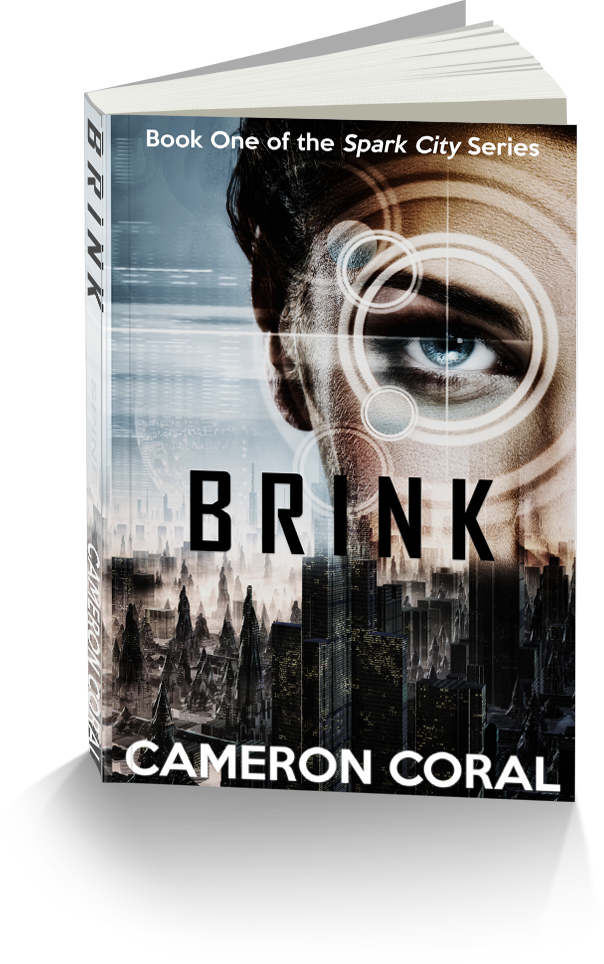
Publishing my first novel was my biggest goal in 2017, and I’m happy to report that I hit that goal in November. Most of my efforts over the last 2.5 years have been spent creating a non-fiction platform, but I started writing fiction in 2015 when I did my first NaNoWriMo.
Again and again, I’ve heard seasoned authors say the first novel is the hardest. Many people spend years perfecting their first book, and this was true for me. I spent two years from the first draft to finally getting it ready to publish.
Personally, I find writing fiction to be much more challenging, because there are many nuances. Fiction requires you to tap deep into your creative brain. You must enter a more childlike ego state to get an imaginative story onto the blank page. Furthermore, the process of editing fiction is time-consuming. I experienced doubt and resistance at many points in the creative process.
A few things helped me finally make the leap and become a fiction author this year. First, I enrolled in Joanna Penn’s “How to Write a Novel” online course which helped me with the basics such as outlining and learning Scrivener. Additionally, her book The Successful Author Mindset has helped me overcome my fear of hitting the publish button.
Second, I attended the 20 Books Vegas conference in early November where I met like-minded authors who are publishing in all kinds of science-fiction and fantasy genres, and in the words of Michael Anderle, I was inspired to finally “hit the f****** publish button.”
If you are struggling to make the transition to writing fiction, or if you have successfully transitioned already, I would love to hear from you. Comment below…what is/was your number one challenge? How will you/did you overcome it?
2. Refuel and find creative inspiration.
When I’m deep into a first draft or editing a novel, I get obsessed. I become closed off, and I suppose that’s necessary to get to the finish line sometimes.
I also stick to familiar routines such as choosing the same types of shows and movies to watch, reading in one genre, and visiting the same restaurants.
In 2018, I plan to branch out and experience other forms of media. As a writer, reading is extremely important, however, taking time to experience new forms of media also works your brain out in different ways.
For example, there is an artist community in my neighborhood that holds an open house on the first Friday of every month. You can browse the many different galleries and talk to local artists, and I find this stimulating to get new ideas.
Have you done an escape room? I found my first one to be an exciting experience in storytelling. The escape room creator had suffered an assault on a Chicago El (subway), and she created an immersive, interactive experience, that ultimately helped her heal. How great that the act of storytelling–entertaining others–helped her turn around a bad experience and create joy for others.
Can you make plans to branch out more and escape the same-old routines? My 2018 adventures will include museums, lectures, reading more magazine articles, listening to TED talks, and reading outside my genre.
3. Get healthy.
I am fortunate because I work with book launch clients who are healthcare practitioners. Recently, I’ve been working with a doctor who is an expert in epigenetics–the science of how our genes express themselves through lifestyle and nutrition.
Working with doctors has illustrated the importance of taking care of our bodies, and how linked our minds and bodies are. Our thoughts influence our day-to-day actions. Our thoughts are who we are.
Imagine the writing potential of someone with a healthy brain and body, someone who gets the right amount of sleep, has positive thoughts, and good relationships. Imagine what such a writer would be capable of producing in a month, year, or in a decade!
I will be incorporating more movement into my author life in 2018, including weekly yoga, working from my treadmill desk, and taking more walks/hikes. I am also doing genetic testing which, combined with the knowledge I have gained from the book Dirty Genes, will help me make lifestyle changes to optimize my health so that I can become an even more productive and focused writer.
4. Dictate.
I was skeptical about dictation for a long time. I thought it just wasn’t for me. After 2.5 years of writing, I have finally adopted it, and I believe it is transformative.
After trying Dragon Dictation in the past, I found it too complicated. Using a microphone that connects to my computer, I dictate straight into a Google Doc. It recognizes my voice with reasonable accuracy, and I’m able to write much faster.
My writing speed was about 1000 words an hour. With dictation, I’m able to write 2500 to 3000 words/hour. Two tactics have helped. First, have an outline ready. It’s more work up-front, but well worth it when you reach impressive speed.
My second takeaway is to close your eyes when you’re dictating. Think about the images in your head that you want to describe for the reader. Closing your eyes lets you talk in a free-flow form without editing yourself. It’s hard, but don’t look at the words on the screen because you’ll be tempted to correct them. The goal is to get words on the page fast.
While you’ll end up having more to edit (don’t worry about punctuation as you dictate), the writing speed increase makes it worth the extra editing. You can always run your unedited content through an editing tool like Grammarly.
I highly recommend dictation for the speed and productivity gains, as well as the health benefits of typing less. It’s so easy to dictate in Google Docs. You don’t need special software, just a decent microphone or headset. Try it for a week, and see if you notice an improvement. Let me know how you do!
5 Fat outline.
When I attended the 20 Books Vegas author conference in November, Kat Lind talked about Fat Outlining. I’ve read several books on outlining and used the three-act structure and hero’s journey concept to structure my novels.
Fat outlining, however, teaches you how to write at a much faster pace by outlining more up front. I highly recommend the Fat Outlining books (on Kindle Unlimited at the time of this article). Book 1 is a solid introduction to the approach, and Book 2 goes deeper.
No different from other types of outlining, you spend time outlining to a story beat. What’s new, though, is you layer in imagery that you want to portray to the reader. Think about leaving a picture in your reader’s mind. Why? A picture is remembered far longer than descriptions or dialogue.
Additionally, Kat Lind tells you to create the sensory feelings that you want to evoke in your reader. For example, the rain pelting your skin, entering a cold room, the warmth of a fireplace, the smell of baking cookies. Those are the types of sensations that will linger in your reader’s mind and make your book more memorable.
Lind references data that shows readers are likelier to read the full book when using this technique. You hook people into your story.
My writing productivity has improved dramatically since using fat outlining. My writing speed has tripled, and I find it easier to plan my books this way. Creating the images and sensory aspects enhances the storytelling (and makes writing more fun).
The second book dives deeper into other fat outlining techniques. Both books are a short read. Re-reading helps solidify the ideas. Closing my eyes as I dictate has helped me immerse myself in storytelling.
Fat outlining may not be for everyone, but a lightbulb went off for me. Kat Lind leans heavily on data (she is an industrial-organizational psychologist). The Fat Outlining book may seem technical, but take it for what it’s worth.
The technique has been like gold for me. I appreciate that Lind used data to show how fat outlining reduces the overall time to write and edit your book compared to other kinds of outlining.
6 Improve your craft.
I’m a big believer in investing in yourself. In 2017, I bought a record number of courses that I thought would be helpful in my author journey. Admittedly, I spent a substantial amount of money on marketing courses that I’ve never finished.
In 2018, I’m investing in writing craft training and focusing less on marketing. Why? I need to focus on producing more books! I’m not at the stage of being able to market extensively until I have at least five or six books.
My short-term focus is assembling the tools to create books that will be satisfying to write, as well as appeal to thousands of readers. The author journey into fiction takes time. You can’t expect to write one or two books and have a runaway success. Instead, it is a compound effect of small things that you learn as you get more practice with writing. The compound effect is also the habits that you form such as writing every day. It is the accumulation of content (and hard work) over time.
As far as training investments, you must decide for yourself what is your core focus, and where you are willing to invest. Would a conference be beneficial, or should you save the time and cost of travel and skip conferences in 2018? Do you need to focus on marketing, or go back to the basics of storytelling? These are the questions you should ask before you invest in the next training course to hit your inbox.
A final note on education–block time in your calendar to follow through on personal development. Even if you don’t have the budget for courses, then block time to read books. And it’s not just reading or skimming through books (I’m guilty of that). True learning is taking the time to summarize the main points of the book, study it, and explain it to someone else.
Teaching others is often the best way to internalize information. So often, I’ll read a great book like Chris Fox’s Relaunch Your Novel, and think, “I’ve got it!” But it’s not until I go back, capture the main points, and complete the exercises that I have fully processed the content.
If you’ve accumulated courses, have you made the best use of them? Consider creating a course inventory that includes how many hours you have completed and the main points. Refer to this list down the road. Think of it as a roadmap to revisit content in the future when you need a refresher.
7 Focus on long-game launches.
Each of us is on a unique author journey. Somehow, we all got started down the path when we began writing, and we will inevitably wind up taking detours or getting sidetracked along the way.
In addition to being an indie author, I leveraged my project management expertise into a new day job at the end of 2016. I consult and manage book launches for traditionally published authors.
In 2017, I managed three large book launches. One book was a #1 NY Times bestseller. The second was a USA Today bestseller, and the third reached #1 in several Amazon categories. My next launch is in January, and I’m hopeful that this will be another massive bestseller.
These types of book launches require months of planning, sometimes up to 6 or 7 months in advance. Such a project is complicated and involves efforts from a team of people that include content writers, developers, digital marketers, and affiliate managers.
Traditionally published launches are much different than indie book launches. A traditional publisher prices books quite high at $27 to $29 for hardcovers. Ebook versions are usually between $9.99 to $13.99. Compare that to $2.99 – $9.99 indie book prices. Unknown indie authors may even price at $0.99 when starting out.
I’ve learned a lot from these long, coordinated launches and will share more information in 2018 about what it’s like to manage a New York Times bestselling launch.
While I enjoy working with authors and getting to know their teams, I also find big launches can be draining both mentally and physically. Often, there is pressure to hit specific book sale numbers and aiming for the top of the bestseller list can be stressful.
In my author career, that’s why I am focusing on a long-term strategy. Ryan Holiday writes about this in his book, Perennial Seller. I’m also reading The Compound Effect by Darren Hardy because the most successful people have taken several years to build their platforms through hard work and small wins over time.
Furthermore, I’m also working on maintaining a healthy mindset in 2018 by not seeking instant gratification and trying to celebrate more successes along the way. This means maintaining a healthy writing and life balance.
Stress takes a toll emotionally and physically over time. When you constantly push yourself to the breaking point or get frustrated that things are not happening fast enough, you set yourself up for a backlash. I’ve learned firsthand that this negative energy builds up like floodwater. After a while, the barriers break, and the waves come crashing through leaving you underwater–and further behind than you were before.
8 Create space for your writing.
Are you creating the space in your life to write? When do you get your writing done? Do you start out writing first thing in the morning? Or do you write during lunch, or in the evening after the kids have gone to bed?
However you decide to segment your writing time, it’s essential to make the space, and do it consistently. In 2017, I struggled to write at the productivity level required to make a living as an author.
My day job is book launch management, and I work on a project-by-project basis. The summer was intense because I had multiple clients. I am changing my model to focus on one large client at a time and will focus more on coaching clients.
This is a personal decision so that I can focus more on fiction. My goal in 2018 is to publish seven books and find my first 1000 readers for my fiction pen name. Since I can’t fit more hours into a day, I needed to give up something to make this time. For me, that’s doing fewer book launch projects, and instead focusing on my own content.
It also means using my time on social media intentionally. When I look at Facebook, I do so with a goal in mind. Perhaps, I want to engage with an author group or engage with readers who follow me. I try to spend less time scrolling through my Facebook feed because I lose track of time. A free app called Moment lets you track how much time you spend on your phone.
If you’re not writing as much as you’d like, or you find time management a challenge, I encourage you to track your time. Maybe there’s something you could give up, such as watching TV at night, or you could order groceries delivered to save time. There are time-management ideas in my book Creating Space to Thrive, as well as ways to make your environment conducive to creativity.
9 Get your books into audio.
Audio growth is poised to be significant within the next few years. I plan to get my top-selling books into audio in early 2018. I’m ready to take the plunge and make the leap into audio.
I will not be going exclusive with ACX, which means a lower royalty rate, but that’s because I don’t like the idea of being locked into a contract. The distribution of audiobooks is expanding with companies like Findaway Voices who may be poised to offer up competition to ACX.
Have you considered turning any of your books into audio? If not, perhaps you could start with just one? Or consider a go-forward strategy where you start with your next book.
10 Support other authors.
 Connecting with, learning from, and supporting other authors is time well spent. Attending the 20 Books Vegas indie author conference was a game-changer for me. While there, I met folks with whom I’ve stayed in touch, as well as learned from and supported. I’ll attend the May 2018 Sell More Books conference in Chicago to reconnect with friends, and meet new authors.
Connecting with, learning from, and supporting other authors is time well spent. Attending the 20 Books Vegas indie author conference was a game-changer for me. While there, I met folks with whom I’ve stayed in touch, as well as learned from and supported. I’ll attend the May 2018 Sell More Books conference in Chicago to reconnect with friends, and meet new authors.
Even if you don’t have time or budget to attend conferences, I encourage you to spend time each week reaching out and connecting one-on-one with other authors. Learn about what other people are writing, or where they are struggling. Perhaps you can offer up tips and strategies, and they may return the favor when you need help.
11 Recharge your brain and body.
Do you take time to recharge throughout the week? Or do you work insane hours and then collapse at the end of the month? I fall into the latter (burn out) category. I tend to be a workaholic–I get obsessive about a book launch or draft, and I work at a frantic pace until I’m mentally exhausted and drained.
I feel down when I have a weekend where I don’t write, but I’m learning that this is okay. It’s part of the author journey, and rest helps me in the long-term. In 2018, I plan to build in downtime each month.
I need this time to let my brain empty. I can’t produce constantly–that’s a recipe for disaster.
Additionally, I am working less during the evening hours, instead choosing activities that fill my brain, such as courses, reading, or listening to podcasts. I’m spending evenings away from social media, marketing, and administration tasks because I want less screen time before bed.
When my brain is worked up, I have trouble falling asleep. That, or I wake up at 3 AM thinking of my to-do list and having trouble falling asleep. If this is happening to you, consider using evening time to relax and wind down, instead of getting amped up.
12 Be intentional on social media.
What if you spent less time on social media, and were instead mindful of what you do online? My challenge to myself in 2018 is to live with intention, and that includes time spent on social media. Before I post something, I ask whether it is adding value in the world. Do I have something to say?
I’m not trying to take all the fun out of posting! I know that people, including me, want to post for fun and see updates about kids, pets, and your vacation in Maui.
I’m just saying that less is more when it comes to sharing. I’m choosing to spend my social media time more wisely by adding value for others. That might be posting information for friends and loved ones, supporting other authors, or sharing marketing tips.
13 Say no.
Do you say no often enough? I’m a people pleaser, and will often agree to things that aren’t really charging me up. Does this happen to you?
If so, it’s time to reflect on how you respond to requests and invitations going into 2018. I will say “no” to activities that drain me, and “yes” to things that recharge me.
One of my weaknesses in social situations where there’s alcohol is that I overindulge and wind up feeling awful the next day. My writing productivity suffers. This behavior drains me. As an aside, two of the entrepreneurs I showcased in Creating Space to Thrive both gave up alcohol for long periods of time to be more focused on their business life.
My theme in 2018 is to live with intention. Rather than doing more of the same activities, I want to liven things up by going to museums, art shows, and educational lectures. This is the artist’s date concept, and I’m blocking time on my calendar in 2018 to make sure I create the time.
Exploring new things, and being in a variety of situations, is where ideas often arise. Once, I had an idea for a story after visiting a photography exhibit at the Chicago Museum of Contemporary Art.
What can you do to create new experiences in your life in 2018?
14 Work. Relax. Don’t think.
Recently, I re-read the Ray Bradbury book on writing, Zen In the Art of Writing. It’s a fantastic book. I’m also rereading Fahrenheit 451 by Bradbury which I first read when I was a teenager. I’m studying the elegance of his writing. He could create a picture in the reader’s mind without having to resort to tons of description and dialogue.
In Zen, Bradbury talked about three things that every writer needs to succeed:
-
Work,
-
Relaxation,
-
Don’t think.


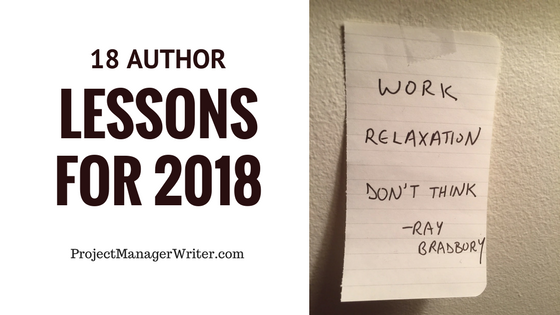
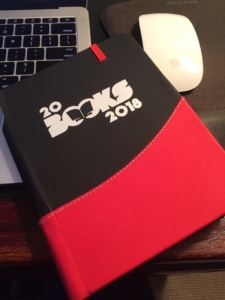 Connecting with, learning from, and supporting other authors is time well spent. Attending the 20 Books Vegas indie author conference was a game-changer for me. While there, I met folks with whom I’ve stayed in touch, as well as learned from and supported. I’ll attend the May 2018 Sell More Books conference in Chicago to reconnect with friends, and meet new authors.
Connecting with, learning from, and supporting other authors is time well spent. Attending the 20 Books Vegas indie author conference was a game-changer for me. While there, I met folks with whom I’ve stayed in touch, as well as learned from and supported. I’ll attend the May 2018 Sell More Books conference in Chicago to reconnect with friends, and meet new authors. 
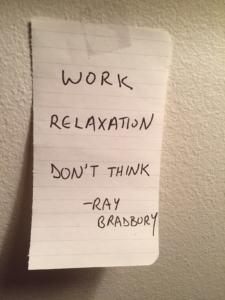
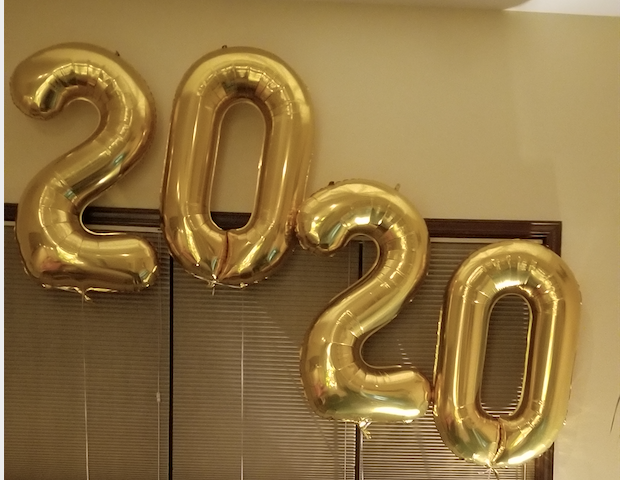

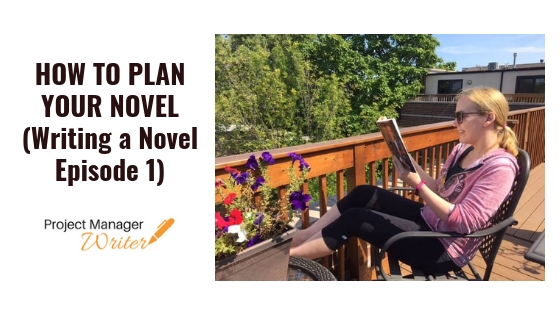
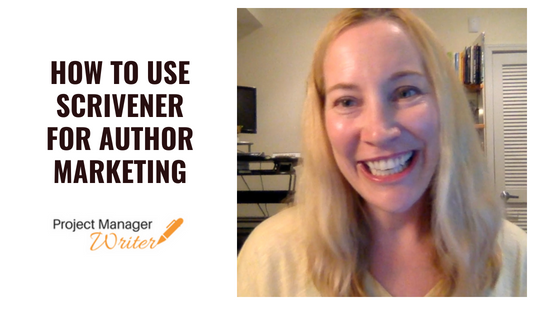
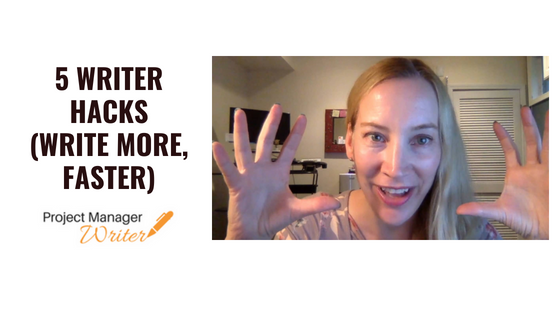
Leave A Comment